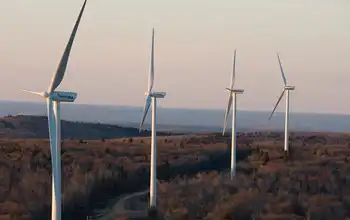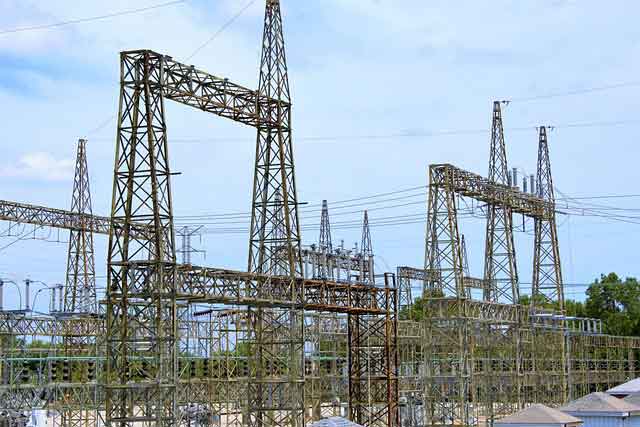OntarioÂ’s iron-fisted energy model
By National Post
Substation Relay Protection Training
Our customized live online or in‑person group training can be delivered to your staff at your location.

- Live Online
- 12 hours Instructor-led
- Group Training Available
If anybody wonders what stimulating clean and green energy programs might mean to economic policy, a working model has just come into effect in Ontario.
Billed as a North American first, the new Ontario green energy plan involves imposing hidden taxes on electricity consumers to fund an industrial strategy based on government directives, subsidies and trade protectionism — all for the benefit of a select collection of rent-seeking corporate interests. Now those corporate interests and local community activists can apply to the Ontario Power Authority (OPA) for new “Feed-in Tariffs” on new wind, solar, biomass and other renewable generating facilities.
While the going price of electricity at the wholesale level in Ontario is currently around 4 or 5 cents a kilowatt hour, the OPA is offering feed-in tariff contracts at between 45 and 80 cents to companies building new solar power generating facilities, 13.5 cents on land-based wind farms, 19 cents on off-shore wind farms, and between 10.4 and 19.5 cents on biogas projects.
OPA calls these feed-in subsidies “the first comprehensive guaranteed pricing structure for renewable electricity production.” Being first doesn’t make new taxes any more appealing. The added cost of these subsidies will be borne by electricity consumers, who will see their electricity prices rise to fund the operations.
Feed-in tariff regimes also appear to have been a disaster in Europe — like Denmark’s wind power experience. It’s an odd time to subsidize electricity. Key sectors of the Ontario economy have been in major free fall, driving industrial electricity demand down 23% so far this year. Power demand from steel and auto making, pulp and paper and mining is not expected to recover any time soon. Consumer demand is also crashing, in part because of the failure of global warming to show up during the summer. July was the second coldest in 40 years and peak power demand was down 25%.
Into this market Ontario plans to subsidize the arrival of fashionable solar and wind power — even though there is likely going to be little demand and electricity prices are going to be low. In a cagey move, the province has yet to set a target for renewable power as a share of the total electricity market. But an army of corporate players is ready to collect the subsidies, including Samsung, the Korean industrial giant that is looking at building a 55-turbine wind farm in the province and collect the guaranteed 13.5-cent FIT — plus other incentives.
Nobody would do any of this voluntarily, especially in today’s dead power markets and with green energy priced way beyond market prices. As a result, Energy Minister George Smitherman had no choice but to swing an iron fist. In a recent letter to the OPA, Mr. Smitherman personally seized control of the agency. “I write pursuant to my authority as the Minister of Energy and Infrastructure, in order to exercise the statutory powers of ministerial direction which I have in respect of the Ontario Power Authority.”
There followed a series of instructions: “I direct you to develop a feed-in tariff (FIT) program.” And “I direct the OPA” to engage in a range of other command-and-control initiatives to boost green energy in communities, municipalities and on Aboriginal lands.
One of those directives flies in the face of another G20 effort aimed at “reduction or elimination of barriers to trade and investment in this area.” Barrier reduction is to be “voluntary,” although it is clear Ontario plans to do little volunteering. “I direct,” ordered Mr. Smitherman, “the OPA to require that each wind power and solar PV project and solar microFIT project contained a defined percentage of domestic content.” Since Ontario has only one solar-panel maker within its borders, that’s good news for the solar panel maker, if not for consumers paying the 80-cent feed-in tariff.
ItÂ’s impossible to know how these protectionist provisions play against the reports that Canada and the United States are currently attempting to negotiate a new deal on local procurement. The provinces are said to be among the obstacles to a deal that would exempt Canada from Buy America provisions and exempt America from Buy Canadian provisions. Ontario seems to be heading in the wrong direction.
Whatever happens on domestic protectionism, Ontario power consumers are going to be paying more than market prices for electricity, and not just for green electricity.
TransCanada Corp. has announced plans to build a $1.2-billion gas-fired power plant in the Toronto suburb of Oakville. While there are no guaranteed feed-in tariffs for gas, one of TransCanada’s bankers says the new plant will receive a guaranteed regulated rate of return on the investment over 20 years, thereby “protecting the company from the current weak Ontario power market.”
Under the new Ontario electric power and green energy plans, personally directed by the minister, everybody is protected and subsidized except consumers.











